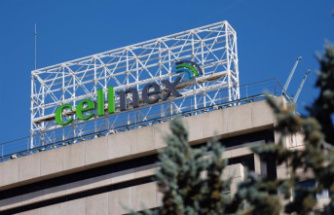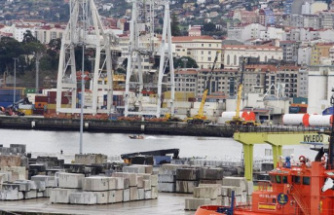Banksy, the still-anonymous British street-art prankster turned multi-million-dollar entertainment mogul, can add a new line to his impressive résumé: Toronto condominium facilitator.
While technically not involved with 90 Harbour Street, a pair of downtown condo towers, and 1 York Street, the office tower that last week unveiled a salvaged work believed to be by Banksy, he’s been a big help for Menkes, the property developer.
Under the city’s Section 37 provision, in which developers exchange such things as “community benefits” for easing the city’s official plan on height restrictions, the Banksy work plays a big public role.
Increased height means more units, which for developers means bigger profits. According to the city’s final staff report on the development, the official plan allows for heights of 115 metres for 1 York and 125 metres for the towers at 90 Harbour.
The report shows staff recommending 1 York be approved for a 37-storey, 174-metre office tower and, at 90 Harbour Street, two towers at 233 and 224 metres, or 66 and 62 storeys, respectively — each of them nearly double the zoning restriction in the official plan.
The artwork, a spray-painted stencil of a cop holding the leash of a muzzled balloon dog, was apparently made while the artist was here in 2010 on a PR tour for his film Exit Through the Gift Shop. It’s now safely behind glass as commuters pass by in a new above-ground extension of the PATH pedestrian network.
It’s a curious role for Banksy, a famously anti-capitalist street artist, who has routinely decried efforts to sell or show his salvaged works.
“I think it’s disgusting (that) people are allowed to go displaying art on walls without getting permission,” he wrote on his website, banksy.co.uk, in 2014, when a London auction of his works cut from building walls and transport trucks went on view. The collection was titled “Stealing Banksy.”
The Sincura Group, the U.K.-based art dealer that organized the auction, billed it as the “most expensive collection of artworks” by the artist ever assembled, selling some pieces for as much as 1.7 million pounds (about $2.8 million Cdn.).
Here in Toronto, the artist is presented amid a bundle of “community enhancements” proffered to secure the height restriction easement. Among other benefits — including a $10 million cash payment for area improvements — Menkes agreed to install the Banksy in the PATH system that links the buildings to the Air Canada Centre and Union Station.
As proof of the piece’s value, Menkes had it restored and appraised at $850,000 (U.S.). Jared Menkes, the company’s vice president, told the Star that the company had faith in the appraisal and the authentication, though multiple attempts to contact Banksy himself went unanswered. (The Star’s several attempts to contact the artist also received no response.)
“The piece was featured in the artist’s website and book,” Menkes said. “It was also formally appraised so we don’t have any doubt that it is a Banksy.”
As far as the artist is concerned, it appears what happens to a piece after he’s done with it is as important as the piece itself. The “Stealing Banksy” show had “nothing to do with me,” he stated on his website, and he refused to authenticate any of the works.
Indeed, the thorny issue of street art — usually made in secret and rarely with the intention of permanence or sale — has been much discussed in art circles as the form has gained greater prominence both in the market and museum world.
A new documentary about efforts to preserve street art, Saving Banksy, makes an important distinction.
“The thing is, artists like Banksy make pieces in their studios that they designate for sale,” producer Brian Greif told Artsy, a contemporary art website.
“But the works they’re making on the street aren’t intended to be sold, or even saved.”
As a kind of counter-PR campaign in recent years, Banksy has been making efforts to undermine both his own commercial success and the rampant poaching of his works around the world: Shortly after the “Stealing Banksy” auction, he set up a stall in New York selling “Banksy originals” for $60 each.
Most thought it was a con, and business was nearly non-existent, though one of the few buyers was rewarded: After Banksy confirmed their authenticity on his website, his two $60 pieces went up for auction at more than 120,000 pounds each.
The work at 1 York, one of five found scattered around the city one day in 2010, was salvaged from the derelict Ontario Workmen’s Compensation Board Building at 90 Harbour St. The heritage building — which also once housed the Ontario Provincial Police headquarters — was demolished in 2011 to make way for the new development.
Before demolition, Menkes removed the three panels of limestone that contained the image and put it in storage. Last week, it was unveiled alongside Speculum, a shimmering, mildly distorted mirror adjacent to the Banksy by artist Johnson Chou. Menkes says the two works are part of what will eventually amount to a $2 million public art commitment from the project.
And what about the piece itself? Banksy began more than 20 years ago as a subversive street art prankster, spoofing social taboos. More recent works have been darkly satirical takes on the refugee crisis, such as a cluster of pigeons holding signs that say “Keep off our worms” and “Go back to Africa” across from a brightly coloured parakeet.
For his Toronto foray, a promotional endeavour for a film satirizing both the excess of the global art market and its interest in him, he seemed to mail it in, mostly repeating old works — a rat wearing goggles, a dour man in a suit with a sandwich board that reads “will work for idiots.”
A little local meaning might be squeezed out of the Banksy now restored at 1 York: A cop with a balloon dog, made the same year as Toronto hosted the G20, a security debacle that resulted in at least one officer being convicted of misconduct, and two class-action lawsuits against the Toronto Police Service.
But more likely, he just got lucky — the conference took place months after the piece was made.
The Toronto Star and thestar.com, each property of Toronto Star Newspapers Limited, One Yonge Street, 4th Floor, Toronto, ON, M5E 1E6. You can unsubscribe at any time. Please contact us or see our privacy policy for more information.
Our editors found this article on this site using Google and regenerated it for our readers.













